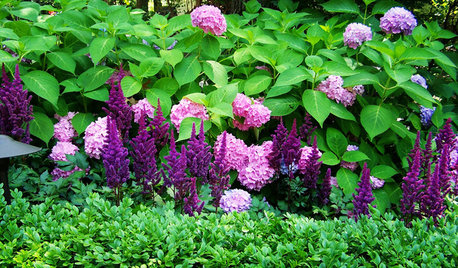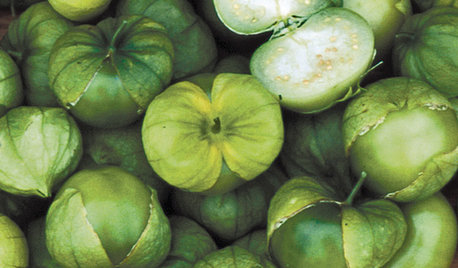Best mulch for tomatoes?
2ajsmama
11 years ago
Related Stories

EDIBLE GARDENSSummer Crops: How to Grow Tomatoes
Plant tomato seedlings in spring for one of the best tastes of summer, fresh from your backyard
Full Story
GARDENING GUIDESThe Art of Green Mulch
You can design a natural garden that doesn’t rely on covering your soil with wood and bark mulch
Full Story
FARM YOUR YARDHouzz Call: Home Farmers, Show Us Your Edible Gardens
We want to see where your tomatoes, summer squashes and beautiful berries are growing this summer
Full Story
GARDENING GUIDESSoutheast Gardener's May Checklist
Bask in the blooms and mind your mulch this month; summer means lots to savor and lots to do in the garden
Full Story
SUMMER FRUITS AND VEGETABLESSummer Crops: How to Grow Tomatillos
Grow this Mexican native for the freshest salsa verde — and for fewer problems than its tomato cousins
Full Story0

GARDENING GUIDESCalifornia Gardener's June Checklist
Update your hydrangeas, catch up on tomatoes and more ways to enjoy your California garden in June
Full Story
GARDENING GUIDESCalifornia Gardener: What to Do in July
Active green thumb or not, top priorities for peak fruit and veggie season: watering, feeding, keeping up with growth
Full Story
FARM YOUR YARD6 Things to Know Before You Start Growing Your Own Food
It takes time and practice, but growing edibles in the suburbs or city is possible with smart prep and patience
Full Story
GARDENING GUIDESEssential Watering Tips for Your Edible Garden
To give your edible plants just what they need, check out these guidelines for how, when and how much to water
Full Story
FARM YOUR YARDHow to Build a Raised Bed for Your Veggies and Plants
Whether you’re farming your parking strip or beautifying your backyard, a planting box you make yourself can come in mighty handy
Full Story






digdirt2
capoman
Related Professionals
Signal Hill Landscape Architects & Landscape Designers · Del Aire Landscape Contractors · Farmington Landscape Contractors · New Carrollton Landscape Contractors · Greenfield Landscape Contractors · Arlington General Contractors · Fort Salonga General Contractors · Geneva General Contractors · Leavenworth General Contractors · Montclair General Contractors · Rolling Meadows Stone, Pavers & Concrete · La Palma Decks, Patios & Outdoor Enclosures · Lewisville Decks, Patios & Outdoor Enclosures · Richmond Decks, Patios & Outdoor Enclosures · Sun Lakes Decks, Patios & Outdoor Enclosures2ajsmamaOriginal Author
luvahydrangea
2ajsmamaOriginal Author
Bets
2ajsmamaOriginal Author
noinwi
2ajsmamaOriginal Author
barrie2m_(6a, central PA)
homegardenpa
noinwi
huntoften
missingtheobvious
noinwi
coconut_head
ladon
sue_ct
homegardenpa
harveyhorses
ladon
digdirt2
erikkrush
artknarf
davidtigerfan
digdirt2
hankjrfan
dhromeo
ikea_gw
cziga
jolj
hejerry
harveyhorses
socks
digdirt2
sunnibel7 Md 7
harveyhorses
homegardenpa
sunnibel7 Md 7
ngfam2
digdirt2
seysonn
sleevendog (5a NY 6aNYC NL CA)
dickiefickle
marcantonio
jolj
marcantonio
jolj
marcantonio
jolj